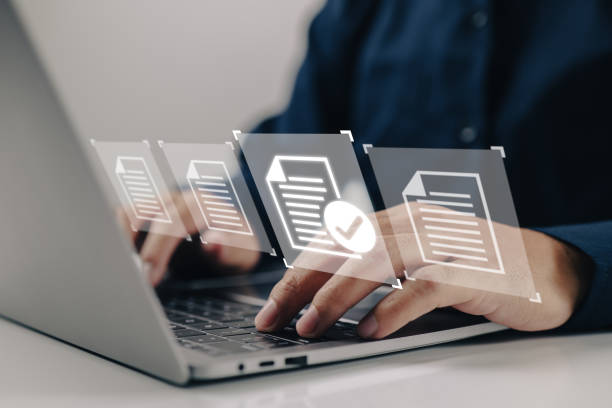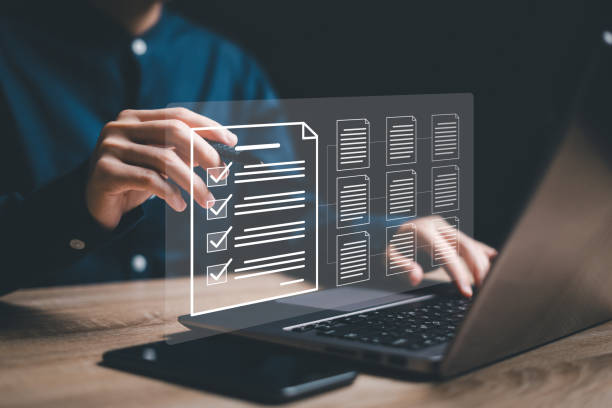Hidden Secrets of On-Page SEO and Its Importance
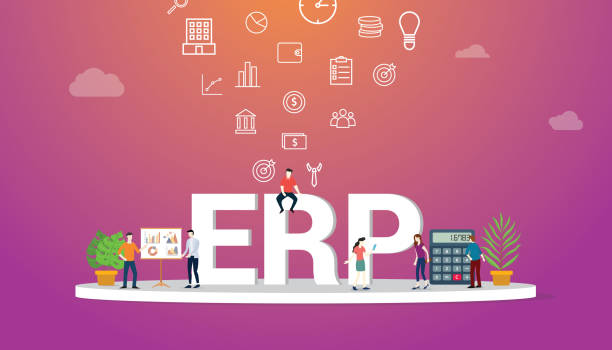
In today’s highly competitive digital world, visibility in search engines is a necessity.
But how can one achieve top rankings among millions of websites? The answer lies in precise and smart optimization, an inseparable part of which is On-Page SEO.
On-Page SEO refers to a set of actions performed within the website itself, on its content and structure, to improve its ranking in search results.
This includes optimizing titles, meta descriptions, URL structure, text content, images, and internal links.
Unlike Off-Page SEO, which deals with activities outside the site (such as backlink building), On-Page SEO is entirely within your control.
This section provides a comprehensive and educational explanation for understanding the basic concept of On-Page SEO and its importance.
The main goal of this optimization is to help search engines better understand the content of your pages and also improve user experience.
With a deeper understanding of users, search engines can better match your content with user queries.
The more relevant and high-quality your content, the more likely users are to spend more time on your site and navigate to other pages.
Ultimately, focusing on content quality and site structure sends positive signals to search engines, leading to higher rankings and increased organic traffic.
Do you have an online store but your sales aren’t as expected? RasaWeb solves your problem forever with professional e-commerce website design!
✅ Significant increase in conversion rates and sales
✅ Unparalleled user experience for your customers
⚡ Click here for a free consultation with RasaWeb!
Key Elements of On-Page SEO: Your Success Tools
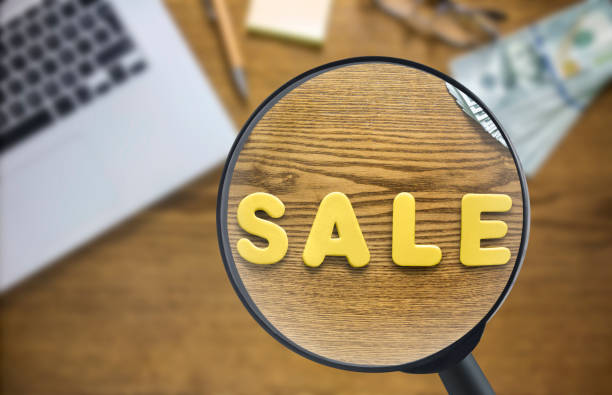
To succeed in On-Page SEO, special attention must be paid to its key elements.
The first important element is the Title Tag.
The title tag is the first thing users see on the search results page and should include the main keyword of the page and be engaging.
The Meta Description tag, although not directly affecting ranking, plays a vital role in click-through rate (CTR) and should encourage users to click.
Proper use of heading tags (H1-H6) is crucial for structuring content and improving readability for users and search engine crawlers.
H1 should contain the main keyword of the page and be used only once per page.
Other headings, from H2 to H6, are used in order of importance to organize sub-sections.
This section provides a step-by-step guide for optimizing the use of these elements.
The URL structure should also be short, descriptive, and include relevant keywords.
Clean and understandable URLs help search engines better understand your site’s structure, and users also comprehend the page’s topic through them.
All these factors together contribute to the overall improvement of On-Page SEO and ensure that your content is understood and ranked with greater accuracy.
Content Optimization: The Backbone of On-Page SEO

Content is king; this statement holds special significance in the world of SEO, especially in the realm of On-Page SEO.
Creating high-quality, relevant, and valuable content is the foundation of any successful On-Page SEO strategy.
Firstly, precise and comprehensive keyword research is the foundation for producing content that users are truly searching for.
You should identify primary and secondary keywords that are the target of your content and use them naturally in the text, titles, and descriptions.
Strictly avoid excessive keyword repetition (Keyword Stuffing), as this not only harms your ranking but also disrupts the user experience.
Content readability is also very important.
Using short sentences, small paragraphs, bulleted lists, and relevant images can aid readability.
This section provides an in-depth analysis of how to write engaging content that is both appealing to users and favored by search engines.
Your content should be unique, comprehensive, and informative.
Strive to answer user questions and be a reliable source in your specialized field.
Regularly updating old content can also help maintain the site’s freshness and ranking.
Table 1: Content Optimization Checklist for On-Page SEO
| Action | Description | Importance |
|---|---|---|
| Keyword Research | Identifying words and phrases that users search for. | Very High |
| Content Quality | Producing unique, comprehensive, and valuable content. | Very High |
| Structuring with Headings | Proper use of H1 to H6 for text organization. | High |
| Content Readability | Short sentences, small paragraphs, use of lists. | High |
| Natural Keyword Usage | Avoiding excessive repetition and using them naturally in the text. | Very High |
| Topical Relevance | Content must be fully relevant to the page’s topic. | High |
Technical Aspects of On-Page SEO: Improving Speed and Accessibility
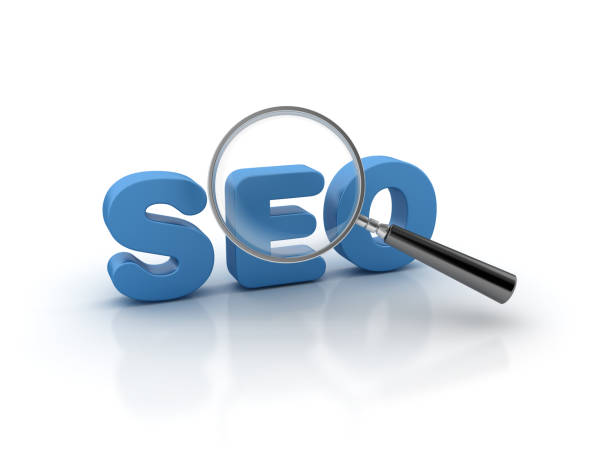
In addition to content, technical aspects also play a vital role in On-Page SEO.
Website loading speed is one of the most important ranking factors, as it affects both user experience and the ability of search engine crawlers to crawl your pages.
Slower websites typically have lower rankings and experience higher bounce rates.
The responsiveness and mobile-friendliness of a website are also of high importance, as most users today access the internet via mobile devices, and Google has shifted to Mobile-First Indexing.
Implementing SSL certificate (HTTPS) is essential for website security and building trust with users and search engines.
Using structured data (Schema Markup) can also help search engines better understand your content and display it in more appealing ways in search results (such as Rich Snippets).
This section provides the most specialized tips to ensure the technical health of your site and strengthen On-Page SEO.
Robots.txt file and XML sitemap are also important tools that allow crawlers to correctly find and index your pages and prevent unnecessary pages from being indexed.
Dreaming of a thriving online store but don’t know where to start?
RasaWeb is your comprehensive e-commerce website design solution.
✅ Attractive and user-friendly design
✅ Increased sales and revenue⚡ Get a free consultation
Internal Linking: Your Site’s Vital Arteries
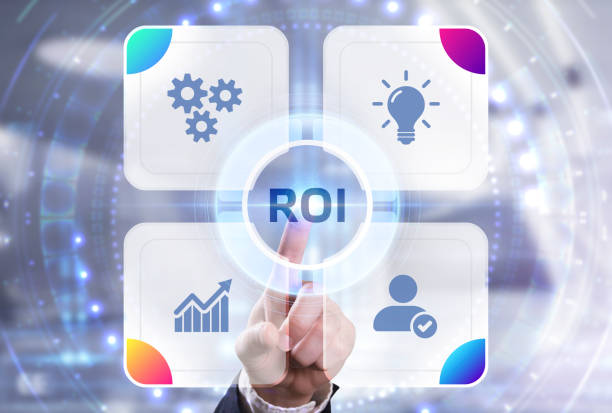
Internal linking is one of the most effective yet most cost-efficient On-Page SEO strategies, often overlooked.
Internal links are hyperlinks that connect one page of your site to another page within the same site.
These links play a vital role in several key aspects: user navigation, passing link equity, and helping search engines discover and index new pages.
By creating a strong and logical internal link structure, you can help users easily navigate your site and find the information they need.
This improved user experience sends positive signals to search engines.
Furthermore, internal links help distribute page authority (PageRank) throughout your site.
Pages that receive more internal links from authoritative pages will have a higher chance of ranking better.
Use descriptive and keyword-relevant anchor text for your internal links so that search engines and users can better understand the content of the destination page.
This section provides a practical guide to internal link structure and its importance in a comprehensive On-Page SEO strategy.
Seize this opportunity to improve your site’s depth and structure.
User Experience (UX) and On-Page SEO: An Inseparable Bond
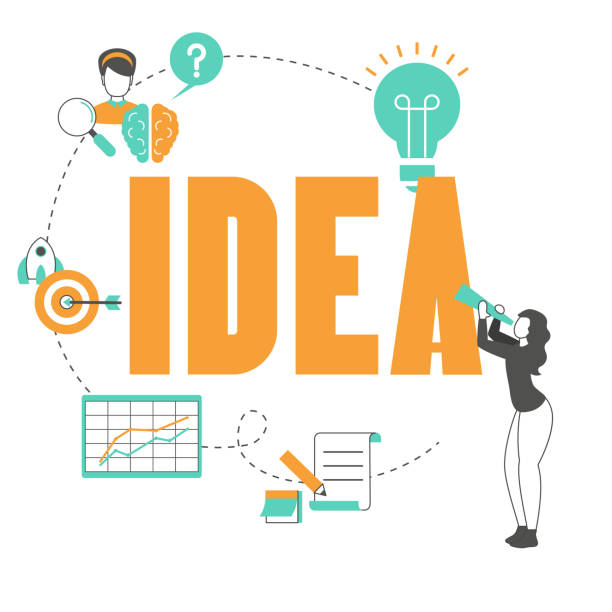
In recent years, search engines have increasingly emphasized User Experience (UX) as an important ranking factor.
This means that On-Page SEO is not just about optimizing for search engine crawlers, but equally about optimizing for humans.
Metrics such as Bounce Rate, Time on Page, and Click-Through Rate (CTR) all indicate the level of user satisfaction with your content and website design.
A website with easy navigation, attractive design, and relevant, high-quality content is likely to keep users for longer periods and have a lower bounce rate.
These positive signals inform search engines that your site is useful and valuable to users, which can lead to better rankings in search results.
This section explains the importance of understanding user behavior and its impact on On-Page SEO with an engaging approach.
Optimizing user experience includes responsive design, fast page loading, readable fonts, appropriate use of white space, and clear calls to action.
The better experience users have on your site, the higher the likelihood of their return and conversion into loyal customers.
Optimizing Images and Videos: An Effective Factor in On-Page SEO
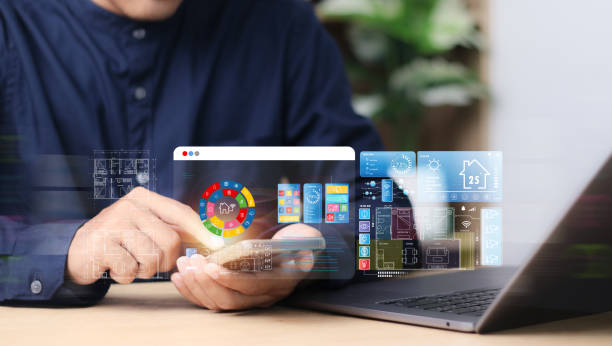
Visual content, including images and videos, not only enhances the appeal and understanding of textual content but also, if properly optimized, can play a significant role in On-Page SEO.
For images, Alternative Text (Alt Text) is one of the most important factors.
Alt Text is a brief and accurate description of the image content, useful for both visually impaired users and search engines that cannot directly see image content.
Including relevant keywords in Alt Text can help improve image rankings in Google Image Search and also assist search engines in better understanding page content.
Image file size is also of high importance.
Large images can significantly reduce page loading speed, which will negatively impact user experience and On-Page SEO.
Using optimized formats like WebP and compressing images without losing quality is essential.
Optimizing image file names by using relevant keywords instead of generic names like “IMG_1234.jpg” can also be beneficial.
For videos, creating a video sitemap and using structured data for video (Video Schema Markup) helps search engines better understand and index your video content.
Additionally, providing a textual transcript of the video can be beneficial for SEO and accessibility.
Table 2: Image Optimization Checklist for On-Page SEO
| Action | Description | Importance |
|---|---|---|
| Alt Text | Brief and descriptive explanation for the image (including keyword). | Very High |
| Image File Size | Compressing images to reduce size and increase loading speed. | Very High |
| Image Format | Using optimized formats like WebP. | High |
| Image File Name | Using descriptive names that include keywords. | Medium |
| Image Caption | Adding descriptions below the image for users. | Medium |
| Image Responsiveness | Ensuring correct display of images on different devices. | High |
Monitoring and Analyzing On-Page SEO Performance with Powerful Tools

After implementing On-Page SEO strategies, monitoring and performance analysis are essential to measure effectiveness and identify strengths and weaknesses.
Tools such as Google Analytics and Google Search Console provide invaluable data resources.
Google Analytics provides information about user behavior on your site, such as the number of visitors, time on page, bounce rate, and user paths.
This data can help you identify points where users leave the site or encounter problems, and by optimizing them, improve user experience and consequently On-Page SEO.
Search Console also provides direct information on how Google interacts with your site, such as the keywords users use to find your site, crawl errors, page indexing status, and site performance in search results.
This section provides an in-depth analysis of how to interpret this data and convert it into actionable insights for continuous improvement of your On-Page SEO strategy.
By using these tools, you can continuously monitor your site’s SEO performance and make necessary changes as needed to always stay on the path to success.
Losing potential customers due to an unprofessional website? RasaWeb is your answer! With our specialized corporate website design services:
✅ Elevate your business’s credibility and standing
✅ Experience attracting more targeted customers
⚡ Act now for a free consultation!
Common Mistakes in On-Page SEO and How to Avoid Them
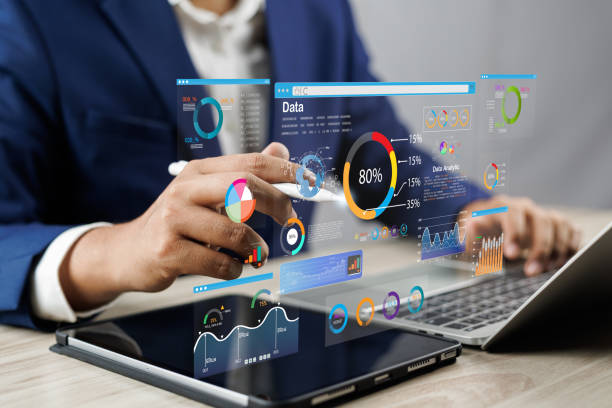
In the journey of optimizing On-Page SEO, there are some common mistakes that can render your efforts ineffective.
One of these mistakes is Duplicate Content production.
If similar or identical content exists on multiple pages of your site, search engines become confused and may not rank any of those pages well.
Using Canonical Tags can help solve this problem.
Another mistake is Keyword Stuffing, meaning excessive and unnatural repetition of keywords in the text.
This practice is not only penalized by Google but also ruins the readability of the text for the user.
Keywords should be used naturally and intelligently within the content.
Broken Links are also a common issue that disrupt user experience and harm your site’s SEO credibility.
Regularly checking and fixing broken links is essential.
Lack of mobile optimization, neglecting site speed, and not having a logical and SEO-friendly URL structure are other mistakes that can negatively impact your On-Page SEO performance.
This section provides a comprehensive explanation of these mistakes and ways to prevent them, enabling you to implement a strong and sustainable On-Page SEO strategy.
The Future of On-Page SEO and A Summary of Key Points

The world of SEO is constantly changing and evolving, and On-Page SEO is no exception.
Emerging trends like Artificial Intelligence (AI) in search, Voice Search, and Image Search are shaping the future of this field.
Search engines, using AI, are capable of better understanding User Intent and providing more accurate and relevant results.
This means your content should address not only keywords but also users’ real questions and needs.
Optimizing for voice search has also gained increasing importance due to the rise in the use of voice assistants; this means focusing on longer keywords and more natural language.
To stay at the top, you must constantly update your knowledge about On-Page SEO and align your strategies with these changes.
This section includes news and expert predictions about the future of On-Page SEO.
Finally, remember that success in On-Page SEO is a continuous process, requiring patience, effort, and ongoing analysis.
By focusing on quality, user experience, and adapting to new algorithms, you can significantly increase your website’s ranking.
Frequently Asked Questions
| Row | Question | Answer |
|---|---|---|
| 1 | What is On-Page SEO? | On-Page SEO refers to a set of actions performed within the website (on its pages) to improve its ranking in search engine results. This includes optimizing content, site structure, and HTML codes. |
| 2 | Why is On-Page SEO important? | On-Page SEO helps search engines better understand page content and determine whether that page is relevant and valuable for user searches. This better understanding leads to higher rankings. |
| 3 | What is the first and most important step in On-Page SEO? | Keyword Research is the most important initial step. By finding appropriate keywords, targeted content relevant to user needs can be produced. |
| 4 | What is the role of the Title Tag in On-Page SEO? | The title tag is one of the most important ranking factors and should include the main keyword. This tag is displayed as the page title in search results and influences the click-through rate (CTR). |
| 5 | What is the importance of Meta Description? | The meta description does not directly affect ranking, but by providing an appealing summary of the page’s content in search results, it can encourage users to click, thereby increasing the click-through rate (CTR). |
| 6 | Why is using headings (H1, H2, etc.) in content important? | Headings help structure content and improve readability for users and search engine crawlers. Using keywords in headings also helps search engines better understand the topic. |
| 7 | What does Image Optimization in On-Page SEO include? | It includes compressing images to reduce size, using descriptive and relevant file names, and filling the Alt tag (alternative text) with relevant keywords to help search engines understand the image content. |
| 8 | What is Internal Linking in On-Page SEO? | Internal linking refers to creating links between different pages of a website. This helps in distributing page authority (Link Equity), improving user experience, and assisting search engine crawlers in discovering new pages. |
| 9 | Why is Page Speed important for On-Page SEO? | Page loading speed is a direct ranking factor and significantly impacts user experience. Slow pages can lead to an increased Bounce Rate and reduced user engagement. |
| 10 | What role does quality content play in On-Page SEO? | Quality, comprehensive, unique, and valuable content for the user is the core of On-Page SEO. This content not only attracts and retains users but also sends positive signals to search engines, helping with better rankings. |
And other advertising services of Rasaweb Advertising Agency
Smart Data Analysis: A fast and efficient solution to increase click-through rates with a focus on marketing automation.
Smart SEO: An innovative service for increasing digital branding through user experience customization.
Smart Google Ads: A fast and efficient solution to increase click-through rates with a focus on using real data.
Smart Website Development: A dedicated service for growth in click-through rates based on marketing automation.
Smart Brand Identity: Designed for businesses looking to increase website traffic through key page optimization.
And over hundreds of other services in the field of internet advertising, advertising consultation, and organizational solutions.
Internet Advertising | Advertising Strategy | Advertorial
Sources
On-Page SEO Guide on Rayamarketing
What is SEO? Comprehensive SEO Training by Alireza Shirazi
Factors Affecting Site Ranking on Mizbanan
On-Page SEO Checklist on SEO.ir
? Transform your business in the digital world with Rasaweb Afarin. From secure and professional website design to SEO and targeted content marketing, we offer comprehensive solutions for your success.
📍 Tehran, Mirdamad Street, next to Bank Markazi, Kazeroon Jonubi Alley, Ramin Alley, No. 6

